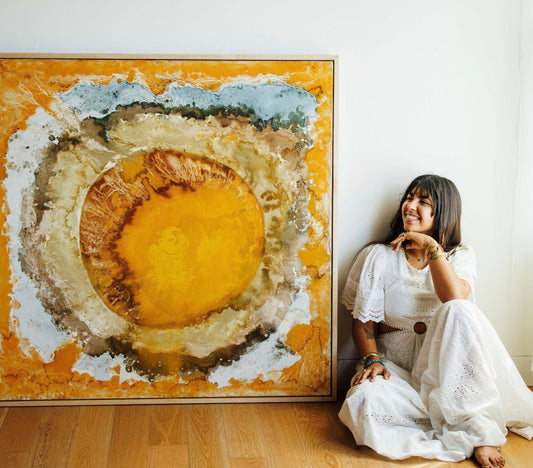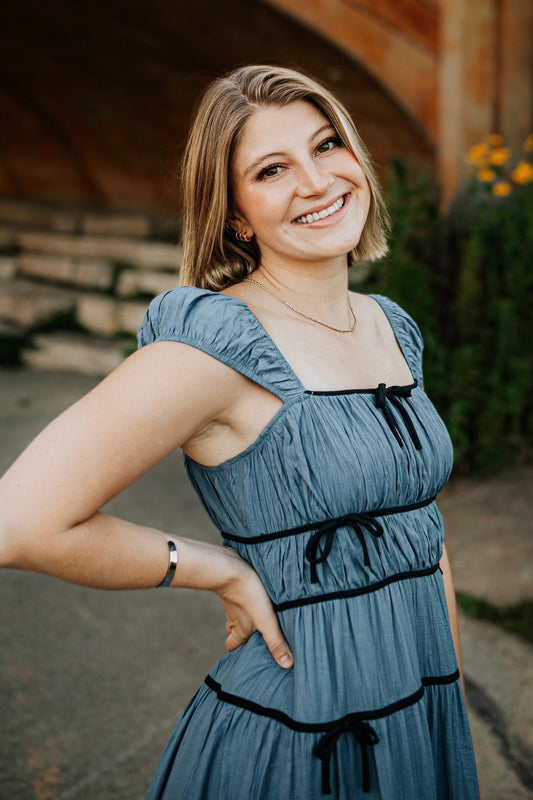Let’s Talk About It: a Conversation with Architect Jeff Shelton
“No one ever knows what they’re doing. So, that should give you tons of confidence. Things get done because you make them get done. You don’t dwell on things you could’ve done better, you just move on.”
If you’ve ever looked at a work of art and thought to yourself, “What was this artist thinking when they created this?” Then you understand how I felt when I first encountered architect Jeff Shelton’s buildings for the very first time.
Santa Barbara-based architect Jeff Shelton is an imaginative creative, known for his whimsical unique architectural creations that populate the coast of downtown Santa Barbara. Shelton’s work simultaneously pulls from history, modern-day art trends, his environment, and the people he collaborates with to produce incredible architectural creations—each building different from the next.
My conversation with Jeff was both illuminating and extremely refreshing as a 23-year-old creative who is just beginning a career in the arts. The main takeaway for me: Work with what you got, remember to play, and don’t stop.

I know the giant pencil at the University of Arizona was one of the first moments in your career when you turned a big idea into a reality (no pun intended). Can you describe a significant moment during that process—or soon thereafter—that influenced the incredible path you ended up on?
Well, one part of this was not thinking. It was just having an idea and proceeding. That’s a lot of it. We had this idea and said to ourselves “Wouldn’t it be great to have a giant pencil here?” and, we had no fear. I told the dean I wanted to build a giant pencil and he said “Sure.”
Jeff paused for a brief moment and laughed. After referencing Claes Oldenburg’s influence on this idea, Jeff remembered a few of the more notable memories from the giant pencil installation.
We had no money. I actually wrote the pencil company Ticonderoga and they gave me money. They became our “donors” so to speak. After graduation, my wife and I were going to move, so, we got our bed—which was a foam mattress—folded it up, painted it pink, and that became the eraser of the pencil. This ended up being sort of symbolic as an eraser sits at the end of the pencil, and we were leaving after graduation.
The pencil continues to play an integral role in Jeff’s career. So we continued down pencil lane…

The transformation from your initial pencil and paper sketches to three-dimensional creations is fascinating. Does the phrase "All ideas seep from the tip of a pencil" still hold true for you and continue to influence your work today?
In addition to being, as Jeff coined during our interview, “pencil pals” with Henry Petroski, the author of The Pencil, a book on the history of the pencil, he so rightly acknowledges that the pencil is where it all starts. He continued,
The pencil is the symbol, the instrument might vary. Things start with a pencil because you can go light or dark, and, as you start, you want to keep doors open and not fall in love with anything. You want to feel the whole idea out. Sometimes a pencil lets you feel a little less committed. You don’t want to get stuck.
After all of that, he cut himself off mid-pencil-thought to so rightly add,
But sometimes you can’t get an idea out with just a pencil—you have to pull a pen out. I sort of think of it as an alive piece, like there is something in there. Of course, there isn’t. But maybe the darkness or wetness of the pen is what's needed at that moment.
And really, everything comes out of that pencil or pen, or even chalk. I believe in the instrument.
My conversation with Jeff highlighted how important the material, environment, instruments, and tactile aspects of his creations are to the end result of his work, but more on that later.

How has your long-time residence on the California coast influenced your work as an architect? Specifically, do you believe that the presence of the ocean has had an impact on your architectural designs and creativity?
Yeah, I grew up here and still live here. California, everyone sort of ends up getting pushed out here, it’s as far as you can go. So many people from all over are here. There’s this attitude of, you can do things. It’s good and it's terrible. There are good things and bad things that you can do, but that is America. Here, in California, there’s an attitude that you can play. Here, you’re not caught in a wild tradition. Even on the East Coast, I can feel the tradition when I’m there.
Now, in Santa Barbara, it is great weather all year. So, you design houses to live outside, for light, for North light. Here, you have an open idea of a house because you can fold it open. You tend to want to fold it open and bring as much light in as you can.
This response surprised me, as it emphasized the importance of environment, weather, form, and function, which is the backbone of each step in an architectural design process. It was at this moment I realized just how much the environment influences Jeff’s designs. He later told me that the where has so much of an impact on his designs that the architecture he creates up North in the mountains looks almost nothing like his Santa Baraba designs. And if you take a look here, you’ll see what he means.

Your designs showcase deep cultural and historical appreciation. How do you navigate the line between cultural preservation, acknowledging the ‘stolen’ concepts (as you say), and creating functional spaces for contemporary needs?
I like this question because really, it moves beyond the historical roots. So which angle do you want to take? There was the Spanish taking the land from the Chumash, then Mexico taking it from the Spanish, and then the U.S. took it from them. Here, we decided on Spanish (architecture). I look at it as an agreed-upon palette. Not simply Spanish colonialism. It is an acceptance of a proportion of an idea.
How can I take that as my palette, and make it within my own space? This is not an attempt to make our space an “old town.” I completely reject that idea. And besides, if you do go to Spain, all of their buildings are inward. Our architecture here is a lot more open, light gets in.
Through his response, Jeff touched on an interesting concept: There is a want, in America to idealize and recreate “European” architecture and style. Jeff acknowledges the history and pulls from the architectural style that populates Santa Barbara, but uses it like one color on his color palette—historical influence is mixed in, not the one and only color on the palette, so to speak.

He ended with this, “I have not caved into doing boring fake-Spanish designs, I try to keep it alive.” And alive he keeps it.
Along the same lines as the previous question: As you navigate this fine line between respectful appreciation and cultural appropriation in your creative process, how do you think an approach like yours impacts the broader field of architecture, which often takes place on lands that have been taken and retaken?
Well, you can call it a stain or a reality, you can call it all sorts of things. And it is everywhere. We are where we are. It is all appropriation of some kind. The key is to be sensitive toward it and make the best calls you can as you move forward. Can you justify not doing anything ever again? Well, you probably could. Do you appropriate local architecture standards from the 1600s? Well, there wasn’t really much. Would that even be right, anyway? That is why I do not call my designs “Spanish.”
What Jeff was getting at is, everything has this “reality” as he first mentioned, that can be traced back to something irreversible.
Sketches and images courtesy of Jeff Shelton.
I know you’ve spoken about your work as it relates to humanity. Is there a connection between the individuality expressed in your handcrafted pieces (where each element differs slightly from the next to create a unique result) and the broader concept of human individuality within the context of humanity?
If you get everyone excited about everyone who builds one of our buildings, all of the people who build a building for a year, no one is showing up to do this just for the paycheck. It is hard work but we have a good time at the job sites—laughing, singing, it is fun. These are fantastic job sites. That feeds into a building, and, when all of these people invest this time, it is something all of these people and their kids get a bit of investment and pride. It feeds itself. That attitude, throughout the whole building—positivity—transfers into the building itself.
And, when you look at a Jeff Shelton design, one of the first things that comes to mind truly is, made with love, light, and laughter. The designs have a playful element, and the actual installation of them does too.

In a more literal sense, the pieces of your work being handcrafted and each one different from the next is a really unique aspect of your buildings, to me it's almost like a metaphor, each human is different from the next–there are no two same people. I see this as a metaphor for each part of your buildings.
Jeff quickly replied,
That is true. You can’t say it any better than that because a person will come in and say “What do you want me to do” and I say “Well I don’t know, I don’t know you yet.” Let’s cut to the chase and try to get down to who you are.
While I thought, when I first laid eyes on Shelton’s work, that he probably dreams up these ideas while he is sleeping, or has these ideas when walking along the ocean. What I came to find is that Jeff reacts to each new surrounding, the used materials, crew, weather & atmosphere. All of these factors make his incredible work what it is. It all begins with one “delicious” (as he calls it) blank piece of paper with a pencil (or pen), and all of the necessary factors and historical context make his incredible designs come to life in the most imaginative, reactive ways.
He left me with this,
What I do is react, and I try to absorb everything around me. Total absorption of what is around the community. It is completely reactionary to the site. People always think I have a ton of ideas, but I have no ideas in my head. I leave the room so I can go get ideas from what is around me.
©ArtRKL™️ LLC 2021-2023. All rights reserved. This material may not be published, broadcast, rewritten or redistributed. ArtRKL™️ and its underscore design indicate trademarks of ArtRKL™️ LLC and its subsidiaries.







